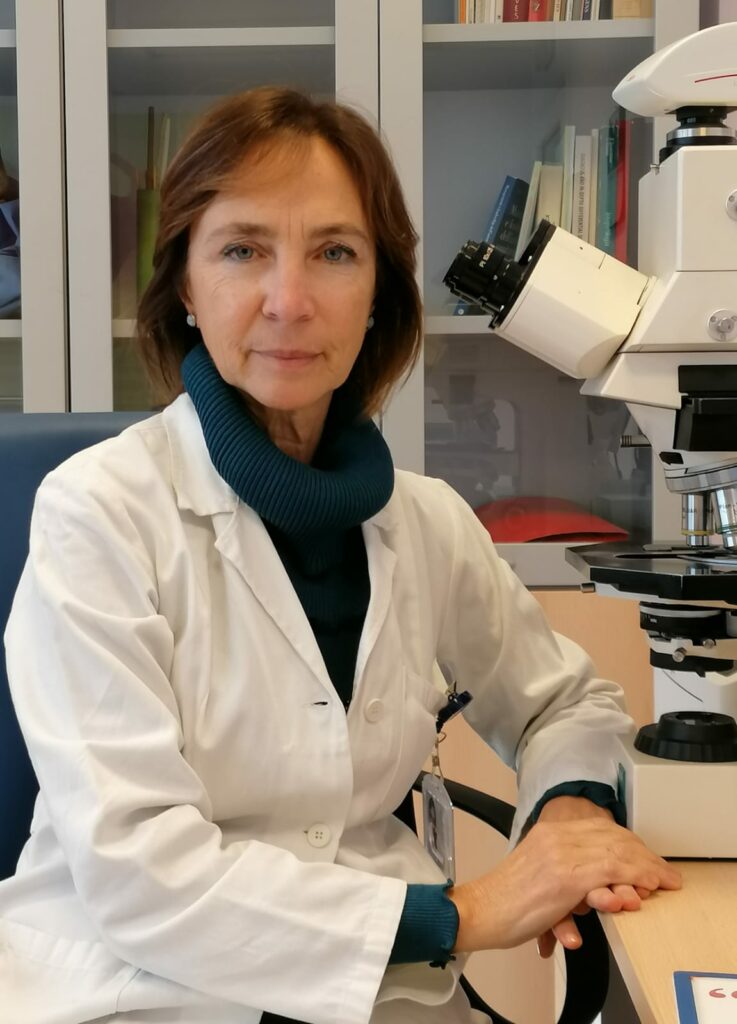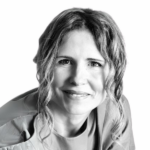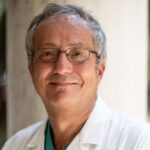Medical doctors and Surgeons
A journey into the crucial role of the anatomical pathologist
Formulating diagnosis of diseases through tissue examination is a key aspect in oncology and the role of the anatomical pathologist is pivotal in this field. Pathological anatomy analyses the macroscopic and microscopic alterations affecting human tissue, caused by pathological processes in the organs. Dr. Francesca Pietribiasi, graduated in Medicine and Surgery, specialised in anatomical pathology and director of the Complex Structure of Pathological Anatomy at ASL in Turin 5, Piedmont Region, will explain this complex branch of medicine. Sharing insights into her professional journey and the fundamental role that she plays in breast pathologies management. An introduction to the world of breast medicine, a crucial field for the diagnosis and treatment of cancer.
A path between passion and commitment

Dr. Pietribiasi started her career many years ago by collaborating with distinguished experts in the field of breast pathology, including professor Bussolati and professor Sappino: «They immediately conveyed to me their passion, their interest in breast pathology, which is still my primary field of study and focus within my ASL», Pietribiasi begins.
This experience has transformed her passion into professional dedication, leading her to become director of Complex Structure of Pathological Anatomy of ASLTO5.
The anatomical pathologist plays a key role into a multidisciplinary team that deals with breast pathology. In collaboration with surgeons, radiologists and oncologists, Pietribiasi explains «the anatomical pathologist contributes to the diagnosis of breast lesions, providing essential information for the definition of the therapeutic path».
From sampling to diagnosis
Dr. Pietribiasi delves into the detailed process of diagnosis, which begins with the collection of suspicious tissue through biopsies. «These samples undergo a series of steps called processing – Pietribiasi explains – culminating in the formulation of a precise diagnosis by the anatomical pathologist». In addition to determining the benign or malignant nature of the lesion, she adds that «today, the anatomical pathologist provides detailed information such as the degree of invasiveness and other predictive and prognostic factors».
The histopathological report becomes a therapeutic guide, influencing decisions on adjuvant treatment. Dr. Pietribiasi emphasises that «it is very important for all pathologists to write a report that is comprehensive, reproducible, and above all, comparable». This is necessary to ensure the quality of the information provided and, most importantly, to allow different medical teams the best and unambiguous interpretation. The completeness of the report by the pathologist is crucial as in the case of genomic tests, to avoid inappropriate chemotherapy in patients who do not have a recurrence risk with hormone therapy alone.
Future perspective for the pathologist
Medicine is constantly evolving and senology is no exception. Dr. Pietribiasi shares some of the latest developments in the field, including the growing importance of neoadjuvant chemotherapy, the role of the tumour microenvironment and advancements in genetic analysis with multi-gene testing. «Certainly in the future, and to some extent, it’s already happening, artificial intelligence systems, images analysis, but mostly the evaluation remains morphological».
The commitment of SenoNetwork
Dr. Petribiasi plays an active role in SenoNetwork Italy, the Network of Italian Breast Centres, contributing to regional coordination of Piedmont and Aosta Valley. She worked to encourage the participation of breast centres and enhance the quality of diagnoses through regular checks.
«We are working to encourage breast centres to participate in quality checks of their activities– concludes Pietribiasi, recalling the objective of the conference – “Attualità in Senologia”, which took place in October – These initiatives provide an opportunity to further deepen knowledge and discuss the latest developments in the field».




































